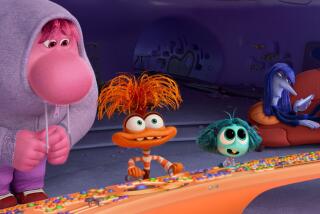FEAR OF COLORIZING
- Share via
Caution: The following letters have been colorized. Do not read without using special safety glasses.
Why all the fuss about colorization of old movies?
Isn’t the issue really fear of market competition rather than aesthetic integrity?
No original work of art is being tampered with, any more than the Van Gogh reproductions in people’s living rooms are destroying the originals.
Foreign films are consistently screened with dubbed voices reciting English dialogue. Can we doubt that the films of the loudest complainers have been shown throughout the world with dubbed foreign dialogue?
While some motion-picture artists beat their breasts over alterations to their work, where is the tongue-clucking over adaptations the motion picture industry has made of the work of novelists and playwrights--often creating films that are masterpieces in their own right, but sometimes merely spawning crude distortions?
As Woody Allen voices his righteous denunciations, does the spirit of Tolstoy suffer torment over what Woody did to “War and Peace”?
The screen adaptation of Hemingway’s “To Have and Have Not” still plays on television. Everybody loves Bogey and Bacall but no one can recognize the novel in the film. What of the aesthectomies performed on the endings of “The Wizard of Oz” and Thornton Wilder’s “Our Town”? The list goes on.
Will the complaining actors, directors, writers and producers withdraw their works from the small rounded tubs on which their wide-screen creations air every day and night, usually spliced between commercials?
Or perhaps colorization is just a fad, a flash in the pan, like talkies, Technicolor, stereophonic sound.
DAVID FARLEY
Woodland Hills
More to Read
Only good movies
Get the Indie Focus newsletter, Mark Olsen's weekly guide to the world of cinema.
You may occasionally receive promotional content from the Los Angeles Times.








